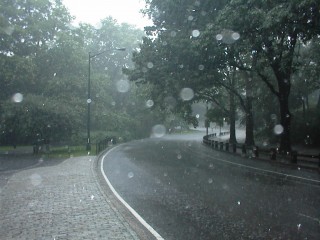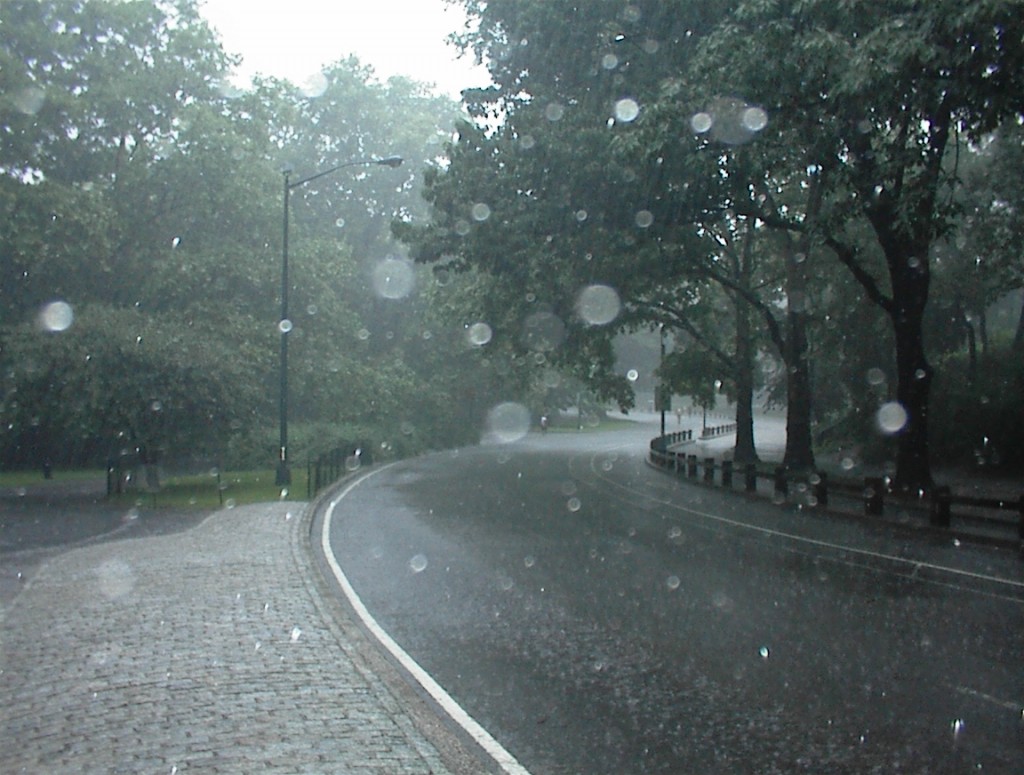
The Internet is a wonderful place for sharing and collaboration. However, that also makes it an easy place to "borrow" content -- especially images. Giving a photo credit (or image credit) is absolutely essential when using those all important photos that every blog post should include.
There are two main things you are probably wondering: What format should I use for the photo credits and where should I place the photo credits? If you've surfed around the Internet much (and paid attention to these little details,) you probably noticed that there are more ways to do this than selfies on Facebook on any give day. Okay, that's not possible. But there are a lot of ways to give proper credit.
For the purposes of this article, we'll use a photo that I took a few years ago while wandering through Central Park during a summer rain.
Photo Credit Format
There are numerous possible formats for online photo credits and lots of online arguments as to which one is the proper format. I suggest finding one you like and using it. Here are a few possibilities:
| Style | Example | Suggested Use |
|---|---|---|
| Simple | Photo by Tracy Thomason | Good for simple credits. Maybe a friend or colleague took the photo but they are not a professional photographer and don't have a web page or other location that someone can visit to see more of their work. |
| Simple with a link | Photo by Tracy Thomason or Photo by Tracy Thomason www.15MinuteMondays.com |
Same as above except now the photographer has a website. |
| Copyrighted works | © 2014 Tracy Thomason or © Tracy Thomason or © Tracy Thomason | www.15MinuteMondays.com |
Copyrighted materials. Include the date if you have it. The first example is straight from the U.S. Copyright Office's Copyright Basics document. But you might not always have a date available, so the second option covers that. And, since we're talking about an online attribution, you might as well provide a link. Everyone loves links back to their pages, right?By the way, you can get the copyright symbol (©) on Windows by holding down the Alt key while typing 0169 or on a Mac by using Option + G. |
| Creative Commons | "Raining in Central Park" by Tracy Thomason is licensed under CC BY 2.0 or Photo by Tracy Thomason / CC BY |
According to Creative Commons, the ideal link (the first example) includes the photo title linked back to the source image, the author linked back to their webpage, and the Creative Commons license. The second version is noted by Creative Commons as being "pretty good." |
And, of course, there are a hundred more possibilities. These are just a few of the common ones.
Photo Credit Location
So where are you going to put that photo credit? The most common (and preferred) location is in the caption of the photo (see photo below). That way the photographer's credit is right next to their work.
However, that might not always work out well for one reason or another. If you're using numerous photos from a single photographer, it might be simpler to have one credit. If you're going for a clean look to the page, you might not want captions on every photo. There could be any number or reasons why this might not work. Another acceptable option is to provide photo credits at the bottom of the page (as I have also done below.) If you have multiple photos by multiple photographers, you might need to make a note next to each attribution to point out which photo goes with that particular credit.

Central Park, Summer 2001
Photo by Tracy Thomason | www.15MinuteMondays.com
Photo Credit
Tracy Thomason | www.15MinuteMondays.com